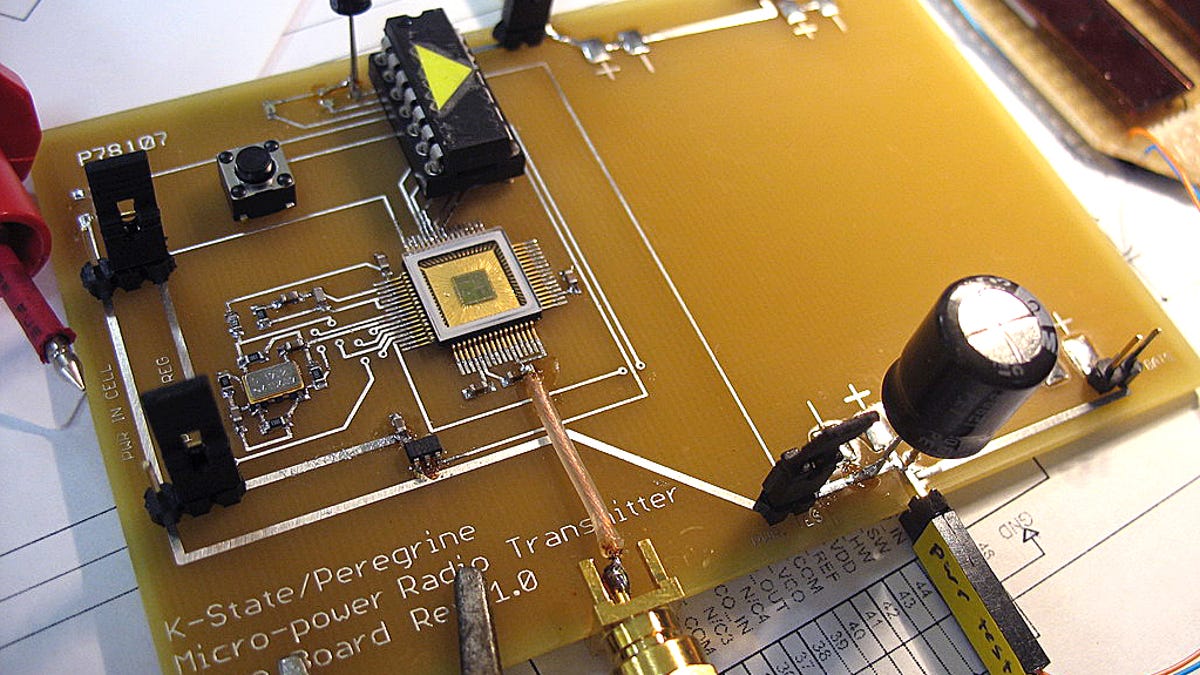Self-powering sensors to transmit data
Kansas State University researchers unveil data-collecting and -transmitting radio sensors that can self-power endlessly from solar cells.

Correction on Wednesday at 11:27 a.m. PST: A press release on which this story was partially based misidentified which NASA mission the technology will be used for. This post was updated with correct information. The energy-harvesting sensors are part of research for forthcoming Mars Scout Missions.
Engineers at Kansas State University have developed a radio with sensors and microprocessors that can transmit data and is self-sufficient when it comes to power.
The device, called by the engineers an "energy-harvesting radio," is essentially a wireless sensor with microprocessor and radio that can transfer a flash of data gathered by the sensor every few seconds.Wireless sensors are not new; they've already been in use to monitor environmental data like river pollution and weather. Even at the consumer level, there are weather radios sold at high-tech gadget stores: people place a radio sensor on the outside of their house and read the weather report from a receiving device inside.
Only those sensors need batteries to power them. The radios being developed by the KSU researchers power themselves and their microprocessor with alternative energy. And instead of only measuring the temperature or pollution levels, these radios can be used to measure all sorts of things, such as stress on bridges.
Bill Kuhn, KSU professor of electrical and computer engineering, and Xiaohu Zhang, a graduate student in electrical engineering, are working on the project for San Diego, Calif.-based Peregrine Semiconductor.
Currently, Kuhn and Zhang are using high-end calculator solar cells to power the radio. But the radio could be powered by electrochemical, thermal, or mechanical energy, according to the researchers.
The research being developed by KSU in conjunction with NASA, the California Institute of Technology, and Peregrine will go toward developing radio sensors for use in the Mars Scout Missions.
The energy-harvesting radio also seems to be a bit of a showpiece for the communications chipmaker since the autonomous sensors happen to require the exact type of technology that Peregrine specializes in: high-speed communications integrated circuits, aka low-power radio chips. Specifically, the researchers are using Peregrine's UltraCMOS silicon-on-sapphire technology.
While they've already managed to get the system to work, Kuhn and Zhang are now refining things like range, power, and frequency. Currently, the radio sends out a burst of data from its sensor every five seconds.
But it's a delicate balancing act.
The scientists have to decide how often the radio should transmit to its receiver vs. how much power it should use, how much data it should process, and how far of a range it should be able to transmit.

